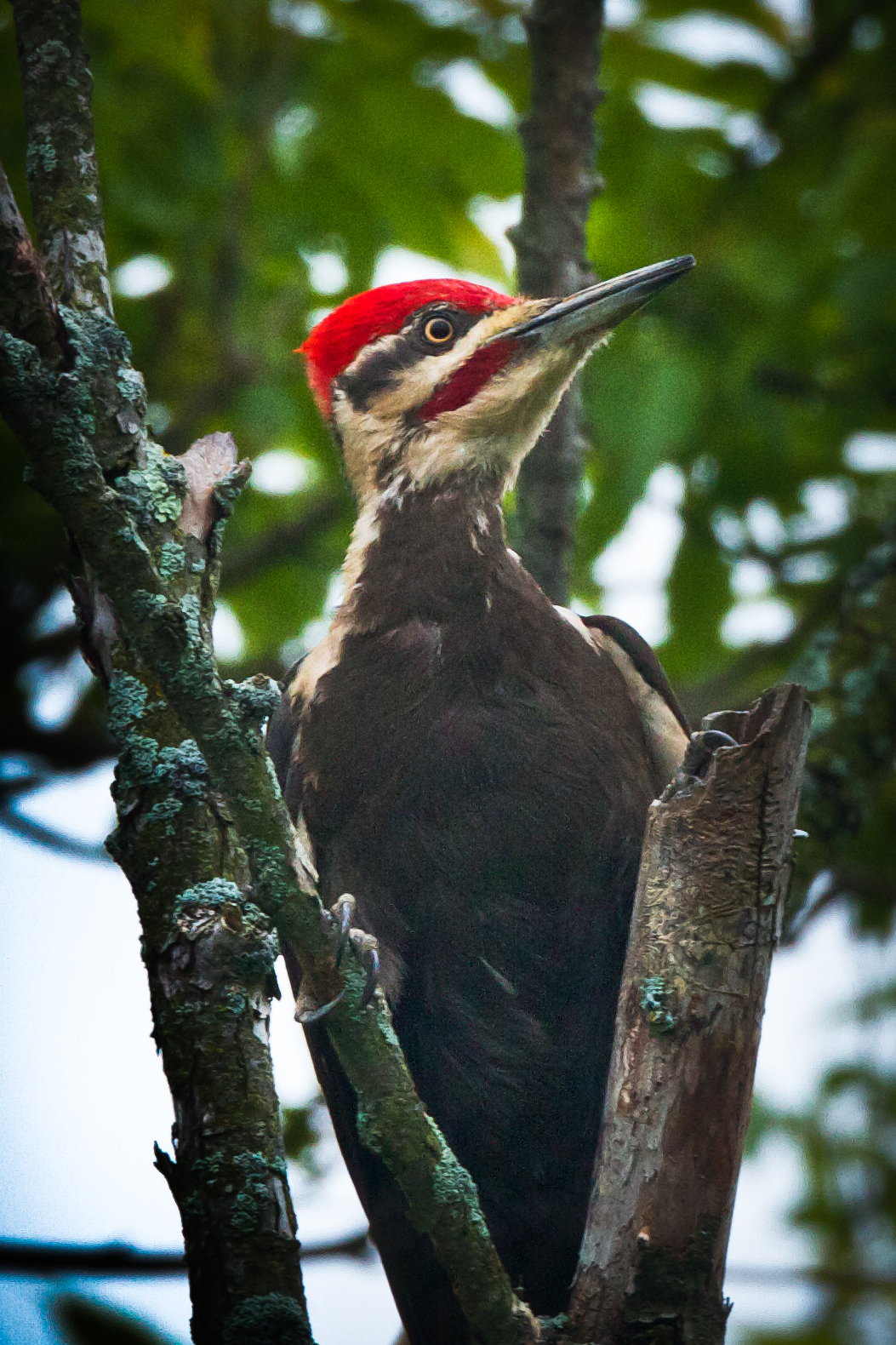The pileated woodpecker, with its striking plumage and iconic red crest, stands as one of the most remarkable and recognizable birds in North America's forests. This captivating bird is not just a visual treat but also an essential part of the ecosystem, playing a critical role in maintaining the health and balance of its habitat. Often heard before it is seen, the pileated woodpecker’s resonant drumming echoes through the woods, a sound that has become synonymous with the wilderness itself.
Known for its industrious nature, the pileated woodpecker is an impressive excavator, chiseling away at trees in search of its primary food source: carpenter ants. These excavations create cavities in trees, which later serve as nesting sites for other birds and small mammals. With its robust physique and a wingspan that can reach up to 30 inches, this bird commands attention wherever it goes. From its crest of vibrant red feathers to its bold black and white markings, the pileated woodpecker is a symbol of resilience and adaptability in the natural world.
In this comprehensive guide, we’ll delve into all aspects of the pileated woodpecker, from its habitat and behavior to its role in folklore and conservation efforts. Whether you’re a seasoned birdwatcher or just someone who appreciates the wonders of nature, this article will provide you with an in-depth understanding of this fascinating species. Let’s journey into the life of the pileated woodpecker and explore why it continues to captivate the hearts of nature enthusiasts around the globe.
Table of Contents
- Habitat and Range
- Physical Characteristics
- Diet and Feeding Habits
- Behavior and Social Structure
- Reproduction and Nesting
- Role in Ecosystem
- Vocalizations and Communication
- Conservation Status and Threats
- Pileated Woodpecker in Folklore and Culture
- Difference Between Pileated and Other Woodpeckers
- How to Spot a Pileated Woodpecker
- Tips for Attracting Pileated Woodpeckers
- Interesting Facts
- Frequently Asked Questions
- Conclusion
Habitat and Range
The pileated woodpecker primarily inhabits mature forests with a mix of hardwood and softwood trees, often favoring areas with large, decaying trees. These environments provide the perfect setting for nesting, roosting, and foraging. Found across much of North America, their range extends from the southern parts of Canada to the southeastern United States. The bird thrives in both temperate and boreal forests, adapting well to various climates and altitudes.
Suburban areas with sufficient tree coverage can also attract pileated woodpeckers, particularly if the trees are older and have an ample supply of insects. While they prefer secluded, wooded areas, these birds are known to venture into less dense forests or even urban parks, provided the habitat meets their needs.
Their territorial nature makes them relatively solitary, with pairs establishing and defending large territories that can range from 150 to 200 acres. This ensures they have sufficient resources and nesting sites within their domain. Seasonal variations can influence their range, as some birds may migrate short distances in search of food during harsh winters.
Frequently Asked Questions
1. What do pileated woodpeckers eat?
Pileated woodpeckers primarily feed on carpenter ants, termites, and other wood-boring insects. They also consume fruits, nuts, and berries, particularly during seasons when insects are less abundant.
2. Are pileated woodpeckers endangered?
No, pileated woodpeckers are not endangered. They are listed as a species of "Least Concern" by the International Union for Conservation of Nature (IUCN). However, habitat loss can pose a threat to their populations in certain areas.
3. How can I attract pileated woodpeckers to my yard?
To attract pileated woodpeckers, provide a habitat with mature trees, install suet feeders, and ensure a steady supply of berries and nuts. Avoid using pesticides that could harm their food sources.
4. How large are pileated woodpeckers?
Pileated woodpeckers are one of the largest woodpecker species in North America, with a body length of 16-19 inches and a wingspan of up to 30 inches.
5. Do pileated woodpeckers migrate?
Pileated woodpeckers are generally non-migratory. They remain in their established territories year-round, although some may move short distances in search of food during harsh weather conditions.
6. Can pileated woodpeckers damage trees?
While pileated woodpeckers can create large holes in trees while foraging, this behavior primarily targets dead or decaying wood. Healthy trees are rarely affected, and their activity often benefits the ecosystem by creating habitats for other species.
Conclusion
The pileated woodpecker is truly a marvel of nature, embodying the beauty, resilience, and ecological importance of North America's forests. From its striking appearance to its essential role in maintaining biodiversity, this bird captivates the hearts of all who encounter it. By understanding and protecting its habitat, we can ensure that future generations continue to hear the rhythmic drumming of the pileated woodpecker in the wild.
For more information on conservation efforts and ways to support local wildlife, visit Audubon Society.
You Might Also Like
Ultimate Guide To Skyline Drive-In: Everything You Need To KnowThe Dock: A Comprehensive Guide To Its Features, Usage, And History
Luxury Redefined: The St. Regis Aspen Resort
All Day Baby: A Gourmet Haven For Food Enthusiasts
The Timeless Brilliance Of Sofia Loren: A Dazzling Icon Of Cinema
Article Recommendations
- The Timeless Appeal Of A Channel Purse A Fashion Icon
- Cliff Richard A Timeless Icon In Music And Entertainment
- Dominos Pizz A Global Icon In The World Of Pizza

